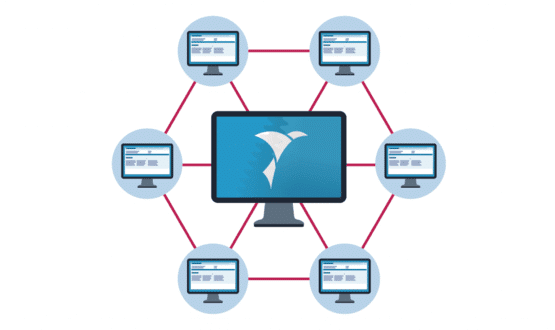Patient.co.uk hearts social media

Last summer the Ice Bucket Challenge seemed to take over the world. Like it or loathe it, the campaign in which people shared videos of themselves pouring ice cold water on their heads raised millions for motor neurone disease charities both here and in the US.
Its success is an illustration of the power of social media. Last year, the EHI Awards 2014 in association with CGI also chose to focus on social media success stories, with an award for the best use of social media to deliver a healthcare campaign.
The winner was a campaign by the patient information website Patient.co.uk, which made impressive use of Facebook, Twitter and a blogging community to drive use of its newly-created health tool, MyHealth.
Q tips
MyHealth calculates a ‘Q score’ health rating for patients from 0-100, based on an individual’s relative risk of cardiovascular disease. It then encourages users to set and track health-related goals and provides help and motivation to meet those goals.
Stella Bolam, social media and content manager at Patient.co.uk, says the tool was part of a new departure for the site, which is owned by Emis Group.
“Our traditional audience comes to us for trusted medical information, usually when they have been diagnosed with a condition. But we have built a wellbeing section, which supplements the medical information, and we wanted a tool people could use if they wanted a healthier lifestyle.”
The tool was launched in 2013 and Patient.co.uk was keen to use social media to promote it. “We had a potentially wide audience in that most people are interested in their health,” says Bolam, “but we wanted to target it at our existing social media audience.
“These people are already online talking about health, and they are predominantly female. A lot of them are mothers, with some grandmothers as well, and most are over the age of 35.”
Trending on Twitter
The team decided to run dual but deliberately different campaigns on Patient.co.uk’s two main social media channels, Facebook and Twitter, and to harness the power of parenting bloggers, who were identified as key ‘online influencers’ for its target group.
To reach these influencers it linked up with Tots100, a network of more than 6,000 bloggers writing about family life, and got 25 parenting bloggers to review the MyHealth tool.
Working with Tots100, the campaign then created an online conversation about health in general, associating it with MyHealth, ran a Twitter question and answer session, with questions answered by its clinical adviser, and created a ‘Twitter party’; which led to # MyHealth trending in the UK.
Throughout the campaign, participants were encouraged to find out how healthy they were by using the MyHealth tool and were also encouraged to share their score with others. The campaign reached 237,642 consumers with 1,175,107 individual impressions and 599 individuals contributing a total of 1’486 tweets using the #MYHealth hashtag.
Bolam adds: “We tried to get people’s attention in an engaging way and get them talking about their score, for instance by asking them if there was anything that surprised them about their score. #MyHealth was one of the most talked about things in the UK while the Twitter party ran.”
In addition Bolam says the campaign aimed to get involved in Twitter conversations about relevant health TV shows where, for example, the programme was focused on leading a healthy lifestyle.
Bolam says: “The great thing about Twitter is that you can monitor it as you go along and find out what isn’t quite resonating and what kind of messaging your audience responds to.”
Liked on Facebook
On Facebook, the team ran a complementary campaign that focused on more visual content. Bolam says the team used “visual sharers” such as content encouraging people to find out if they were an ‘apple’ or ‘pear’ shape using cartoon characters.
“The idea was to be playful and to get people talking about their health but also to say that if they were looking to be a bit more active they could come and look at our tool.”
The campaign also asked Patient.co.uk’s existing Facebook community about their health habits, held wellbeing quizzes and ran competitions with one-off health-related prizes such as spa breaks.
Bolam adds: “Intelligent use of Facebook advertising on a limited budget further drove community growth, increased reach of content and ultimately aided social referrals and MyHealth traffic.”
The results of the overall campaign were that social media referrals to MyHealth increased by 489% while it ran and that , at one point, 117% of people referred became ‘conversions’ and used the tool. This was particularly important for the team.
Bolam explains: “For us our objective was to get people using the tool. You can have people talking about it but what we really wanted was for people to go on to the lander page and try it out.”
Encouraging change
Use of the tool led to improved health for individuals, according to the patient website. A year after its launch, Patient.co.uk did an analysis of almost 3,000 people who had completed a Q score.
It found that high risk individuals who completed the programme had achieved a 25% reduction in their cardiovascular risk, with a reduction of 8.2% of their weight as well as falls in cholesterol and blood pressure levels.
The project also set itself a range of objectives around growing its Facebook and Twitter communities during the campaign and increasing the engagement of users with both channels.
It achieved an additional 5,770 Facebook fans (target 2,500), added 920 more Twitter followers (target 1,000), saw average weekly engagement rate rise to 4.3% (target 1.5%) and increased general site referrals from social media by 12.7% (target 10%).
Bolam says the most satisfying thing about the campaign was when people starting talking about the tool independently. She says this provided an opportunity for Patient.co.uk to get involved in a two way conversation about MyHealth, finding out why people were using the tool and getting feedback on it.
She adds: “I also thing negative feedback on social media is not something you should be afraid of so long as you don’t just ignore it but go back and respond to concerns.”
Top tips
Her advice for others wanted to deliver health campaigns via social media is to be clear about your objective, identify your target audience, link up with other credible organisations where appropriate and – most of all – make it engaging.
She adds: “Social media is a busy area and half and battle is winning people’s attention. If you can try and make it playful and fun it’s less likely to get lost in the noise.” Clearly, pouring ice cold water on your head is a fun thing to do.




